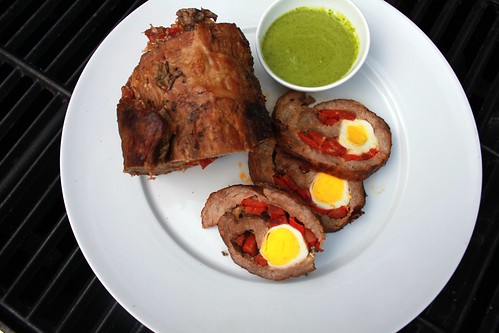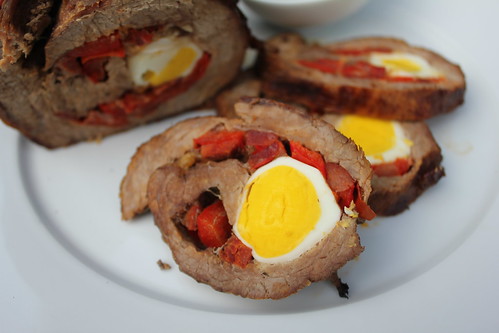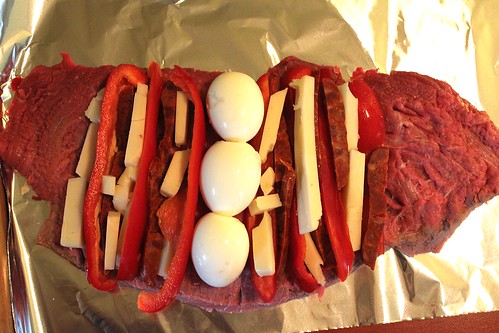“I dream of the South, a huge moon, the sky reversed,
I am looking for the South, the open time, and its thereafter.”
– Vuelvo al Sur, by Astor Piazzolla
One may be inspired by the unlikeliest of sources, and sources of inspiration do not come much more unlikely than John Unsworth. John – Jack to his friends – is from Penistone, South Yorkshire. Inevitably, he came to be known to us as Jack from penis town, a moniker he bore with great forbearance. Skinny and pale, dour, but slyly humorous, and given to obsessions over cult movies and the quality of his tea-leaves, he was in many ways a typical Yorkshireman, particularly in his love of pies. Frequent were the conversations around the texture of the perfect lard crust, achieved at such and such pie shop in Barnsley. Sadly for Jack, these ethereal creations traveled poorly, forcing him to seek solace in the arms of Fray Bentos.
Like generations of Englishmen before him, Jack leant on his Fray Bentos to get him through lean times, in this case three years of impoverished geography studies at the University of Birmingham. Over lunch one winter afternoon, he paused between mouthfuls of his typical steak and kidney in suet pastry, and, wiping dark brown gravy from the corner of his mouth, informed me that Fray Bentos pies were named for a meatpacking town in Uruguay. Somehow, from that dank kitchen in a cramped, filthy student house in Selly Oak, Birmingham, I was instantly transported to the vast stage of the Uruguayan pampa. It was a mental stretch, but I was able to imagine the sour steam of Jack’s pie as the dust cloud raised by the hooves of countless black steers being driven toward the Uruguay River and their slaughter, and the stained, mold-flecked kitchen ceiling as an endless starry sky under which to dream of that rugged southland.
Jack and I lost touch years ago, though I gather his passion for film remained unabated and when last heard of, he was spending most of his spare time as the projectionist at Penistone’s tiny cinema. The fascination he quite unwittingly awakened in me, took a little longer to realize. During the intervening years until I journeyed there, my imagination was fired and nurtured by the magical realism of Jorge Luis Borges and the tragic strains of Carlos Gardel and Astor Piazzolla.
These elements of that barely-known Rioplatense culture ran together with snatches of earlier memories, particularly of the wild soccer genius of Diego Maradona and the peculiar jingoism of the 10-week Falklands War, making the region seem even more exotic, more remote. Nonetheless, such were the echoes of Southern Europe and the apparent homogeneity of the population, that when we finally did visit Argentina and Uruguay, it hardly felt exotic or foreign at all. Such a realization could have been deflating, but instead, aroused a curiosity about how a pair of countries where, by rights, everything should be upside-down could be so comparatively familiar.
Upon our return, absently watching the old-fashioned striped and hooped style jerseys of an Argentine soccer match, for no other reason than to relive our trip through the slurring, Italian-inflected Spanish of the local commentators, I heard a familiar name being repeated. A familial name, in fact: Sills.
In keeping with our nominative brevity, we Sillses are not a numerous clan. To this day, Lee Sills is the only other non-related Sills I have ever met in the flesh, and we somehow managed to go to junior school together, but we appear to be a far-flung tribe with luminaries on four continents. Unremarkable, or, at best, ignominious, in our homeland, Sillses have managed to elevate themselves in their new world environs: fashion designer Caroline Sills in New Zealand, professional soccer-player Juan Sills in Argentina, and most famously, opera-singer Beverly Sills in the United States, to say nothing of my own namesake, ESPN statistics pundit, Jonathan Sills.
That my knowledge of family history is limited to the four most recent generations, due to the untimely death of my grandfather’s parents – one in labor, the other shortly after from the bottle – has left a potentially rich, if poverty-stricken, legacy shorn off in the 1910s. Interestingly, it was around this era as the British Empire reached its apogee that the engineers and laborers who had built the infrastructure on which British industry relied began looking for better lives and better opportunities than could be afforded in the grim northern mill and pit towns they had turned into brutal engines of production.
These new lives and opportunities were often to be found in countries producing the raw materials British cotton mills, steel factories and shipyards needed, encouraging thousands of men spread to the farthest corners of the globe in the interwar years to build railroads, tanneries, processing plants, and shipping lines. Most stayed within the Empire, to Australia, New Zealand, and Canada they went. Others, my relatives included, headed to South America where they built Argentina’s and Uruguay’s railroads, on which Derby-built locomotives chugged, and there, they introduced various British pastimes, football, rugby and polo, while making sure that the poor sods back home had their rations of canned bully beef and leather for their hobnail boots.
Until the fateful conflict over the Falklands, the British and their descendants in Argentina, enjoyed a cultured and respected reputation. Many are the Argentine institutions with British founders or heritage, in which those who had made their fortune tried to mimic the ivory towers they had largely been denied access to at home. I can only imagine that were they able to, my distant relatives would have inculcated themselves into clubs and tea societies with alacrity, but I can’t help wonder whether instead of being captains of industry, their position was rather less exalted, and that they traded pinch-cheeked poverty in North London for sunny but choleric penury in the southern barrios of Buenos Aires.
Were this so, then I have no doubt somewhere in Mataderos – the slaughterhouse neighborhood on the city’s southside, sometimes referred to as Nueva Chicago – there were Sillses tanning leather, making glue or gelatin, or perhaps keeping the books in order, as delighted as I was at the carnivorous abundance, and looking forward to the matambre roasting on their Sunday asado. Out of the blue, one such Argentine Sills, Ruth, recently friended me on Facebook. Oddly, but perhaps unsurprisingly, like the immediate comfort and familiarity I remarked upon visiting Argentina, I could detect – wishfully? – physical traits of my own siblings as I perused her uploaded photos.
An investment in Ancestry.com is still pending and until it is made, the tantalizing prospect of uncovering family mysteries remains just that. I had hardly appreciated the opportunities the digital age has provided to make hitherto impossible leaps across the globe and connect with strangers, however familiar or, potentially, familial, but I feel strongly that technology notwithstanding, some fateful, possibly genetic, gravitational pull had made that outcome somehow inevitable.
Classic Matambre (Stuffed, Grilled Beef Roll: Argentine-style) Serves 6-8
Matambre means, literally, “hunger killer”. What more appropriate dish could there be to celebrate the immigrant experience?
Ingredients
- 2-3lbs flank, London broil, or other boneless, semi-tough cut of beef
- 2 Spanish chorizos, or your choice of sausage
- 1 large red bell pepper
- 1/4lb sharp provolone cheese
- 2-4 large eggs, hard boiled
- salt and black pepper
Recipe
- Either with a meat mallet or by butterflying it, flatten the meat into a long, wide strip, no thicker than 1/2 inch (2cm).
- Place on a larger rectangle of foil, and season well on both sides before making attractive lines of red pepper, provolone and chorizo slices.
- Lay boiled eggs in the middle.
- Then, carefully, using the foil, start rolling your matambre up, pausing every so often to push the filling back into place.
- When fully rolled, scrunch foil at both ends and secure tightly with string. You may also want to do a fancy butcher’s-style tie up around the roll itself to hold it in place. (I did this in the hope that it would prevent the cheese from escaping, but it didn’t.)
- Preheat your grill or oven to high, and cook, turning regularly, for about 45 minutes.
- Remove and allow to rest for at least 30 minutes, preferably longer so it has fully cooled.
- Open carefully, and slice into beautiful pinwheel rounds. Argentines often eat matambre as a cold first course with a vinaigrette. I prefer mine warm with chimichurri, fried potatoes and a green salad, but it’s impressive any way you serve it.
If you so choose, here’s how to make a non-classically prepared chimichurri:
- 1 large head flat leaf/Italian parsley
- 1-2 small cloves raw garlic
- 1 teaspoon (less or more to taste) red pepper flakes
- 1/4 cup good extra virgin olive oil
- 1 tablespoon freshly squeezed lemon juice
- 1-1.5 tablespoons white wine vinegar
- 2 tablespoons water
- 1/2 teaspoon dry oregano leaves
- 1/2 teaspoon kosher or sea salt
- In a blender, combine all ingredients and blitz on high until they form a green, slightly viscous sauce.
- Taste and correct the seasoning. It may need more acid, more oil, more salt, more water, but it should feel aggressively garlicky, a little spicy, and not too “green”.



Love the story Jonny!
@Karen: thanks! It was a fun one to write.
I’ve never thought of doing something like this, but it looks fabulous!! And I love the name 🙂
That is one heck of a showstopper. The back story adds to the flavor of the dish. I too have a lost branch of the family who ended up in SOuth America. There were rumors of great wealth in land and cattle but I never investigated. SOmetimes the myth trumps reality.
Can’t imagine how you can roll up something with whole eggs in it – I would have loved to see it cooked, and maybe another one seeing it sliced up. What a great, great story – but I very much doubt that my French butcher here on Ile de France would be able to sell me anything I could use for this filling and ‘fullfilling’ meal. Thank You for sharing (I saw this in a référence-link in a new post).
@Kiki: thanks for visiting and your comment. Our bad for the dearth of “meanwhile” pictures. We wrapped ours in foil to keep it from falling apart (and so the cheese didn’t drip out and burn on the grill), but next time we make it, we’ll update the post with fresh pics. The boiled eggs are (sort of) the easy bit. Surprisingly it’s the other fillings, like the chorizo, that move and fall out the ends more. I know that butchers in different places section their meat into different cuts. In Argentina, for matambre, they use a cut they call “elephant ear” due to it’s length and shape – I believe from the ribs/stomach of the steer – which we can only find in the US at a few Latin American butchers. Unsure, if there is a French equivalent, but it’s probably the sort of thing that is conventionally put into stew or the sausage grinder.